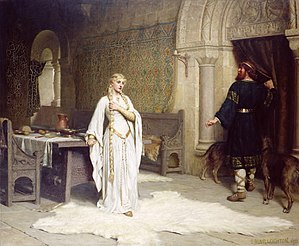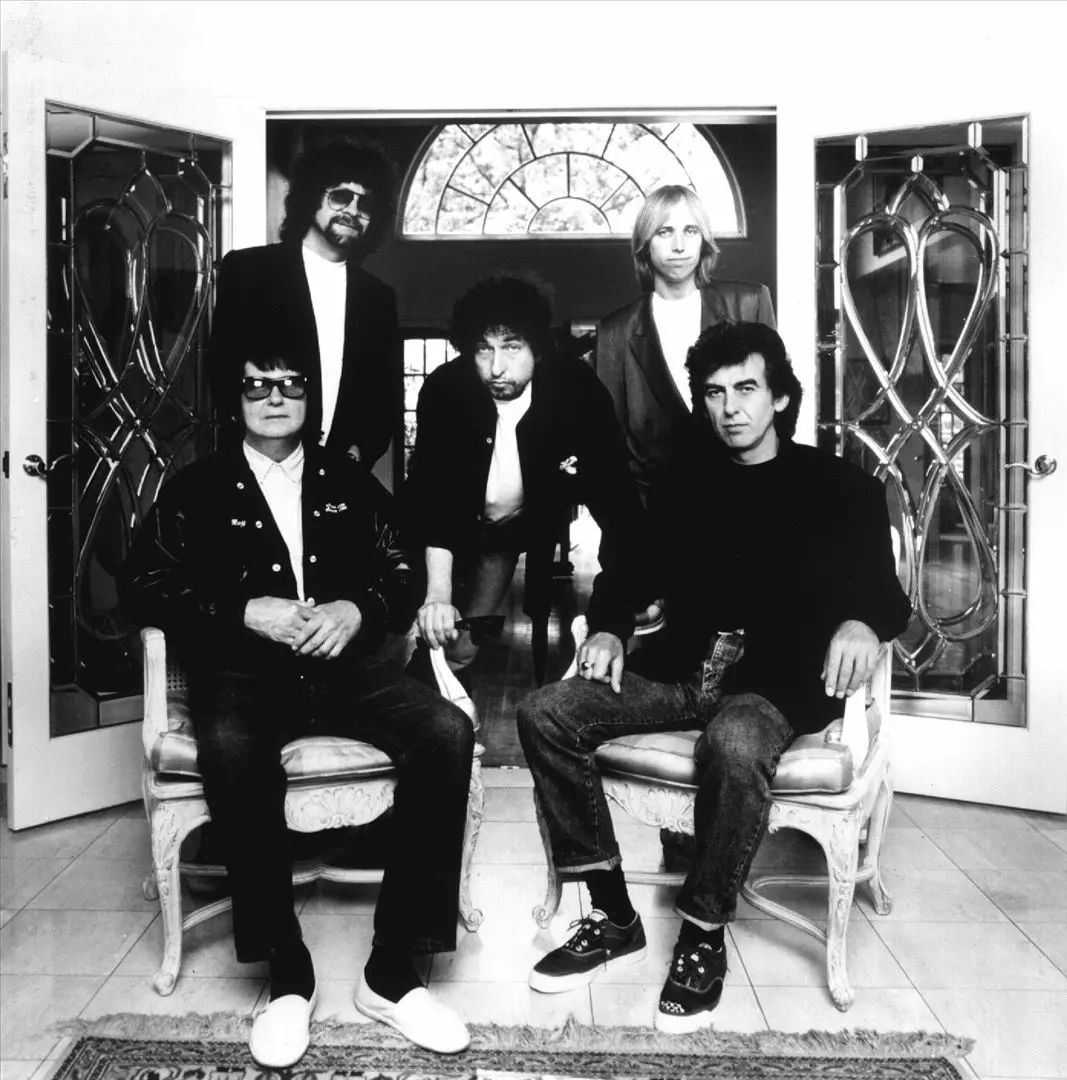Dateline: Coventry, England in the year 1045, give or take ten years. Leofric, Earl of Mercia, possesses two distinct reputations. First, the Earl and his wife continued as generous benefactors to religious houses. In 1043, Leofric founded and endowed a Benedictine monastery in Coventry on a site of former nunnery. The Danes destroyed the nunnery during an invasion in 1016 with Leofric determined to restore a religious purpose to the site. Leofric’s wife “encouraged” him to grant land to the monastery of St. Mary and create an endowment for that monastery. The power couple donated jewelry and commissioned works of art to be donated to these monasteries and other religious sites.
Second, the Earl possessed a well-earned reputation as a landowner who highly taxed those on his lands under this feudal system. These taxes satisfied tribute the Earl owed to the King and supported Leofric’s own lifestyle, including the generous donations to monasteries and religious sites. It is good to be in favor with the King!
In or about 1050, these reputations collided with Leofric insisting that his charitable generosity continue to be funded through his extensive land holdings. That approach translated to even higher taxes on those who occupied the lands. In Coventry, the new and excessive taxes hit so hard that residents confronted the choice of satisfying the new, additional tax or have their families go without food. The Earl made clear that the only choice available would be to pay the taxes.
Enter Leofric’s wife who took pity on the people of Coventry. The Earl’s wife interceded on behalf of the villagers begging the Earl to abandon the new taxes. The historical accounts politely suggest that these requests were so frequent and so fervent that they amounted to marital nagging by Leofric’s spouse. Exasperated, Leofric exclaimed that he would grant his Lady’s request if she would strip naked and ride a horse through the streets of Coventry. Lady Godiva accepted the challenge.
Lady Godiva stood much to lose in bargaining for the town people. While recognized in her own right as a Lady of the King’s court, she knew that her status deeply depended on the fortunes of her husband, the Earl. She could not embarrass or cross Leofric to the point where he would relegate her to some non-relevant status. Lady Godiva’s own riches and lifestyle were directly tied to the funds raised through taxes. Her ability to direct charitable offerings to religious orders derived from collecting taxes on the residents of these lands. Lady Godiva’s own reputation would certainly be an issue among the elite if she were to ride naked through the town.
Yet, Lady Godiva threw caution and her clothes to the wind in an effort to assist those in Coventry. Lady Godiva, in a nod to her own modesty, issued a proclamation “commanding all Persons to keep within Doors and from their Windows, on pain of Death” during the ride. She then rode her horse clothed only in her lengthy hair through Coventry and circled the marketplace before returning to the homestead. Note that historical accounts differ on whether such a proclamation to remain indoors had been issued and whether an audience witnessed the naked parade of one. Regardless, the Earl relented after Lady Godiva’s ride and eliminated the new tax.
The directive to remain inside during Lady Godiva’s ride ultimately lead to another legend which historians cannot readily accept: Peeping Tom. The earliest published accounts of Peeping Tom date back to the 17th Century, hundreds of years following the naked journey. The story of Peeping Tom had been part of the local lore in telling the story in Coventry for hundreds of years.
Peeping Tom, a local tailor in Coventry, could not resist spying on Lady Godiva as she processed through town in all her glory and only her hair. Legends differ with Tom either killed or blinded for his peeping. In one iteration, Lady Godiva’s beauty struck Tom blind. Alternatively, God killed Tom for ignoring the command to remain inside. God would so act to protect Lady Godiva as Godiva meant “beloved by God”. In other tellings of the tale, the people of Coventry beat Tom half to death and blinded him for his transgression. In any event, by 1796, a dictionary defined Peeping Tom as “A nick name for a curious prying fellow.”
Whichever account of Lady Godiva may be accurate, one item remains certain. Lady Godiva possessed commitment to her cause. She bought into the protest at the risk of losing her social status, her spouse, her pride, her wealth, and her future income. She stood up to the one in power knowing that the consequences could be catastrophic for herself and the people of Coventry.
It strikes me that today, especially in this day of the 24 hour news cycle and immediate reporting of anything we can call “news”, we have many protests on almost any issue. But Lady Godiva’s commitment appears absent. We protest so that the voices are heard on the news cycle for today and then almost forgotten.
Take, for example, the Kid Rock Bud Light protests from earlier this year. Please note, I take no position on either side of the Bud Light protests. I am not a fan of Bud Light simply because I do not like the taste of the beer. I otherwise find nothing wrong with Bud Light. I also have no problem with Kid Rock. I do not own Kid Rock albums or CDs, but have no issue with his music. I further understand that Bud Light wants and needs to market to all potential beer drinkers as part of its business model in our capitalistic system. I appreciate that these marketing decisions may not sit well with some of the existing Bud Light consumers and they may rightfully protest. No judgments. No positions. No questions. No dog in the hunt for me.
My point relates to commitment in any protest. Quite vocally and splashed all over social media, Kid Rock famously fought a case of Bud Light. The Kid took aim with his semi-automatic assault rifle at a case of unarmed Bud Light. The semi-automatic won, hands down, with the case of Bud Light blown away beyond recognition. Take that Anheusser-Busch. Kid Rock used that incident to bring voice to the protest against Bud Light’s marketing decisions which alienated Bud Light drinkers. No more Bud Light at concerts, tailgate parties, floating around the lake or at backyard barbecues!
Except . . . Kid Rock forgot about something. Two months after the video of the battle between Kid Rock and the case of Bud Light went viral and Kid Rock declared that Bud Light is beer non-grata, the media dutifully travelled to Kid Rock’s Nashville bar. Entering Kid Rock’s Big Ass Honky Tonk Rock ’n Roll Steakhouse, reporters were greeted with two bottles of Bud Light on the bar. The reporters inquired if Bud Light was still being served at Kid Rock’s bar. The bartender confirmed that Bud Light was never taken off the menu or offerings. In fact, the bartender pointed out the two Bud Lights sitting on the bar. The barkeep further confirmed that patrons still regularly ordered Bud Light. Oops.
Apparently, Kid Rock drew the line for his own protest at his wallet. His bar still served the very offending beer and Kid Rock still made money off those sales. Kid Rock demonstrated commitment by taking down the case of Bud Light and then voicing opposition from his platform. But Kid Rock’s commitment did not equate with the naked commitment of Lady Godiva. Kid Rock placed his own potential income in a position superior to the underlying protest. His commitment possessed limits and he would not risk it all as did Lady Godiva.
Do not misunderstand, Kid Rock pushed the protest against Bud Light father down the road. It could be claimed that Kid Rock’s efforts gave oxygen to the fire against Bud Light. Bud Light’s sales have taken a hit. The protest worked, in part, due to Kid Rock and his actions. However, Kid Rock cannot legitimately claim to have been “all in” with his commitment so limited protecting his own interests.
I do not suggest that Kid Rock should ride his Harley buck naked down Broadway outside his Nashville bar to bring further attention to this protest. Hopefully, none of us wish that approach. When a protester, especially a high profile person, stages such a public demonstration as protest, then commitment must be genuine and across the board. You need naked commitment as with Lady Godiva. Kid Rock did not achieve that level with still looking out for himself.
In Estate Planning, it is often difficult for clients to achieve naked commitment when evaluating who should serve in agency positions in the plan. I have candid and sometimes challenging discussions with clients to recognize who would best protect their interests if and when they can no longer act for themselves. After discussing how one child cannot handle financial affairs and evaluating trust protections necessary for that child for any distribution, the same parents then want to name that child as their Attorney in Fact under their financial powers of attorney. I scratch my head and ask why the parents want this financially irresponsible child to handle their financial affairs. I receive response that the child is the oldest and that the oldest child should have this responsibility. I gently suggest that others may be better suited, even if not the eldest.
Commitment to a child is not a bad thing, but Estate Planning demands naked commitment. Honest, candid and complete analysis of strengths and weaknesses of those who will serve as your agents must be mandatory to protect your interests and ensure that your wishes are followed. Commitment light will not do. Lady Godiva commitment is needed.










